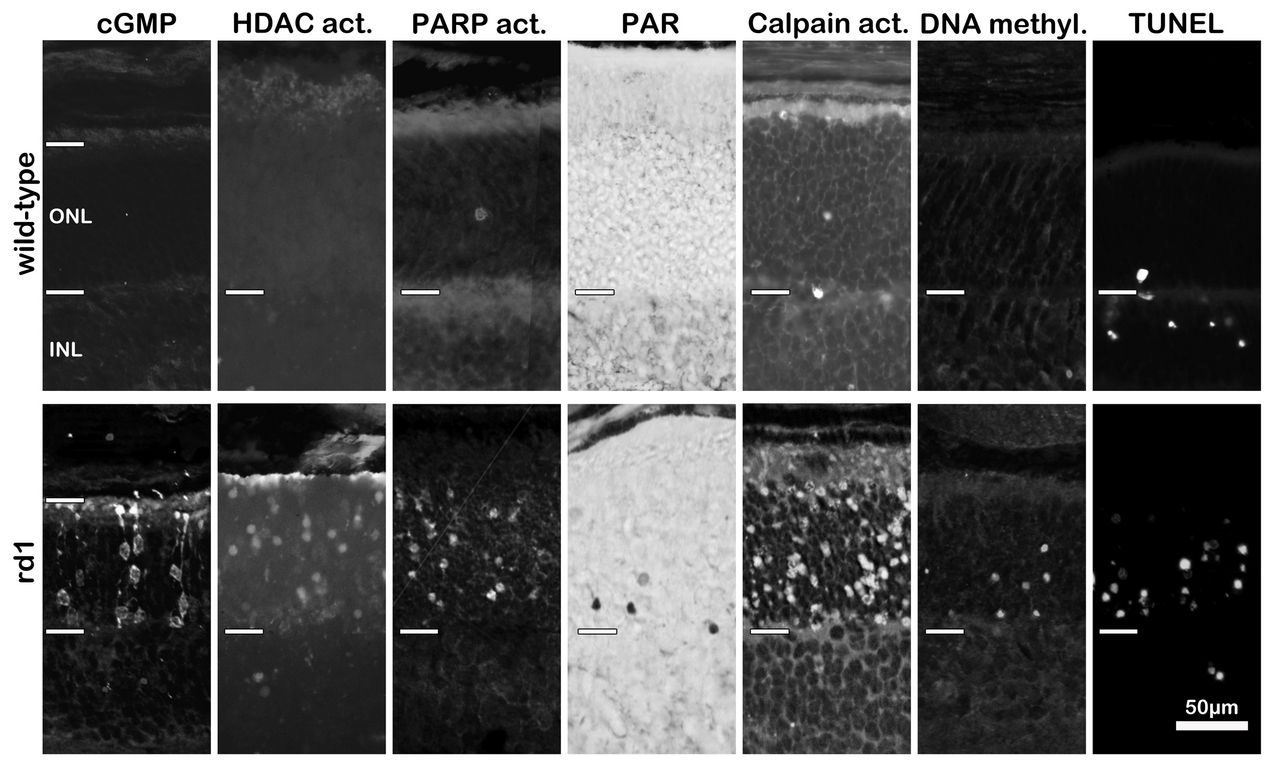
Research interests and techniques
We are studying cell death pathways using pharmacological and genetic manipulations on retinal degeneration models, specific knock-out animals, organotypic retinal tissue cultures and in vivo animal models. For the latter, we use a variety of in vivo application techniques combined with specific drug delivery systems, as well as in vivo imaging and functional testing approaches. Experimental manipulations are evaluated using methods that allow high spatiotemporal resolution of metabolic processes in living retinal tissues.
Processes under investigation concern regulation of cyclic nucleotide synthesis and degradation, activities and expression of protein kinases G (PKG), calpains, poly-ADP-ribose-polymerase (PARP), histone deacetylases (HDAC) as well as DNA methylation (Figure 1). Particular emphasis is put on assessing metabolic activity rather than gene/protein expression. New data generated serves as basis for the development of novel experimental treatments on in vitro retinal explants and where appropriate on in vivo animal models.
We have developed or adapted new methods to biochemically assay enzyme activity in individual retinal cells. Using such in situ biochemical methods, we have identified several novel factors that are highly relevant for photoreceptor degeneration including calpain-type proteases, PARP, PKG and HDAC. In depths studies into the activity of cGMP-dependent PKG have revealed its key role for photoreceptor cell death and in turn highlighted the use of inhibitory analogues of cGMP as therapeutic compounds.



